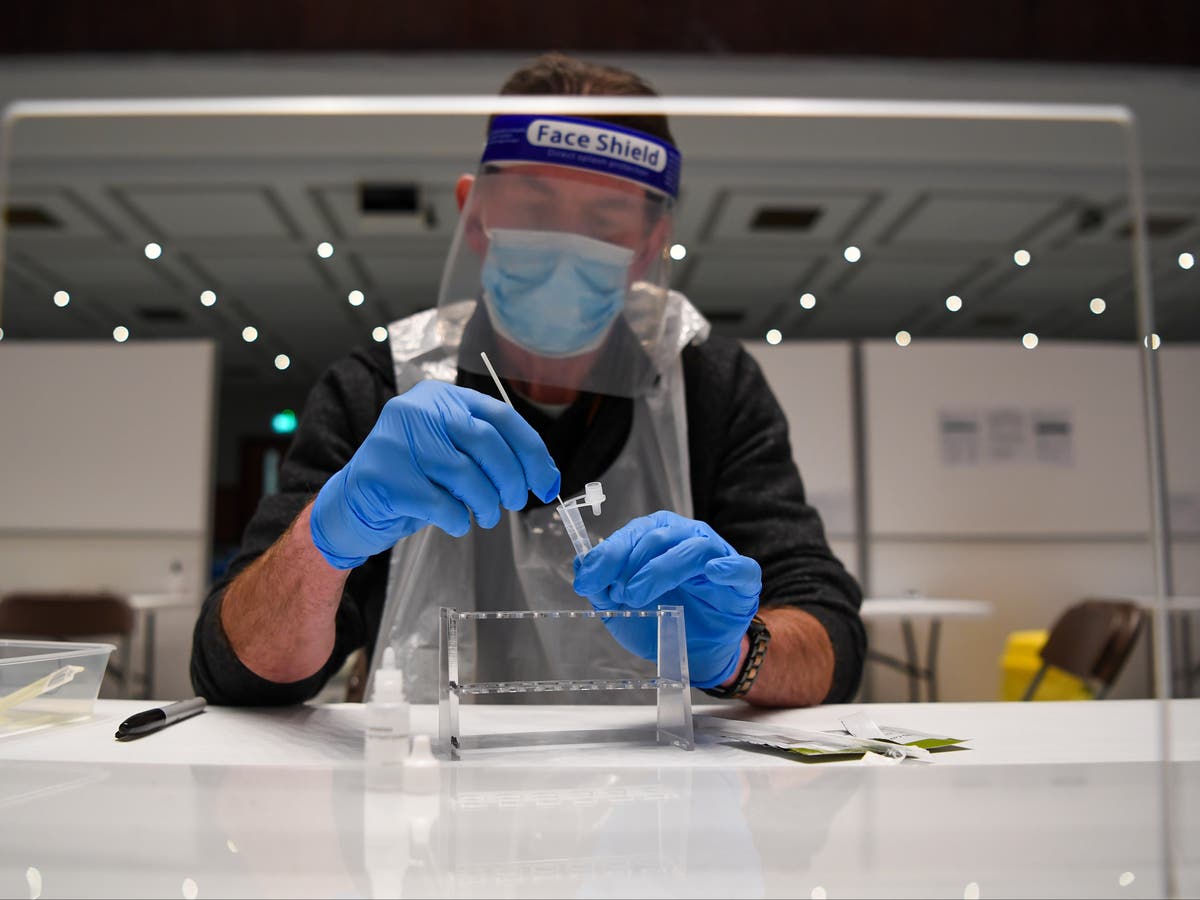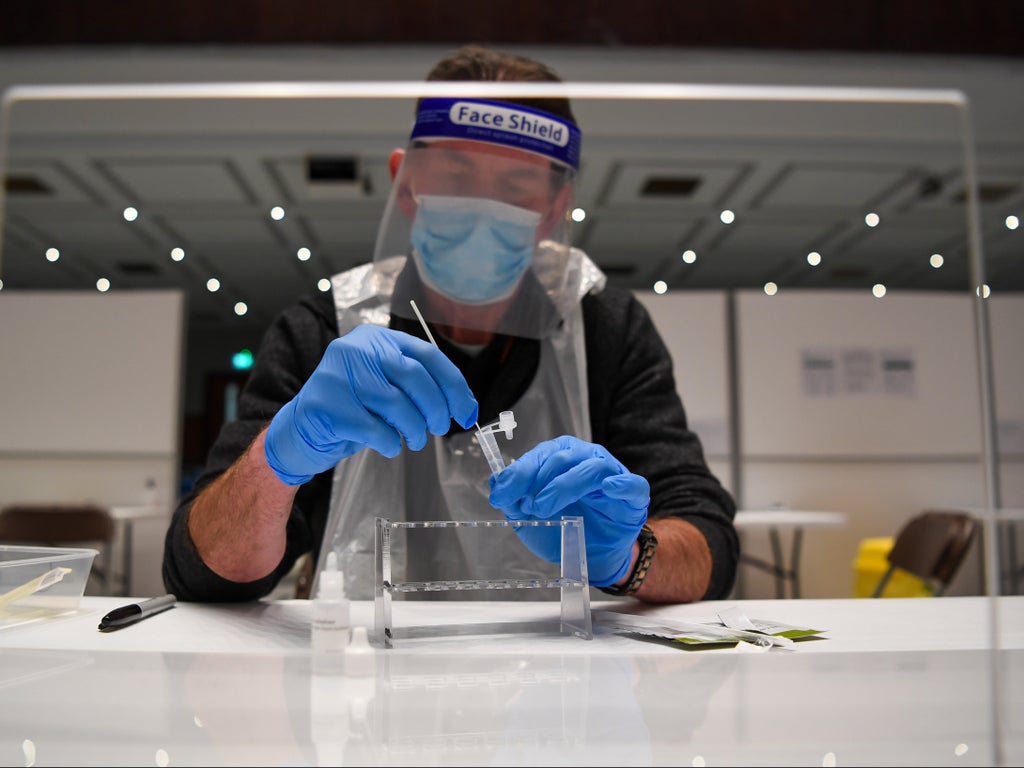The spread of the Omicron variant, which is racing through the population at a staggering speed, has brought renewed focus to the value and reliability of the at-home lateral flow test (LFT).
These rapid testing devices were initially viewed with caution by some scientists, who were concerned that the LFTs simply weren’t effective enough in detecting infections.
But as more data has accumulated over the past year, the consensus around the devices has shifted and become far more positive.
Research from University College London, published in October, suggested that LFTs are likely to be more than 80 per cent effective at detecting Covid, and up to 90 per cent effective for those who are most infectious.
However, the emergence of Omicron has changed the conversation. Its rapid acceleration throughout the UK, with more than a million infections expected by next week, has placed the country’s key testing routes – both at-home (LFT) and lab-based (PCR) – under immense strain.
“Testing capacity will almost certainly fail to keep up with Omicron,” said Dr Jeffrey Barrett, director of the Covid-19 Genomics Initiative at the Wellcome Sanger Institute. “Even with best efforts we can scale supply linearly, but demand will grow exponentially.”
Experts have called on the government to temporarily drop the reliance on PCR lab testing, which typically takes 24 hours or more to return a result but is seen as more reliable, in favour of the lateral flow devices. These can be taken from the comfort of your own home and give a result in a matter of minutes.
“LFT will be good enough, especially on people showing symptoms,” said Alan McNally, a professor of microbial evolutionary genomics at Birmingham University.
Professor Irene Petersen, an epidemiologist who led the UCL research on lateral flow devices, said people who test positive with them shouldn’t bother to confirm their results with a PCR, given the current high pressure on Britain’s testing laboratories.
“It really raises the question whether it is good use of resources to drag infectious individuals out of their home to confirm a positive LFT with a PCR,” she said.
It really raises the question whether it is good use of resources to drag infectious individuals out of their home to confirm a positive LFT with a PCR
Professor Irene Petersen
However, getting hold of the lateral flows is another issue. Following a surge in demand, coupled with apparent logistical complications on the part of delivery suppliers, the public has struggled to order the LFTs via the government website – at a time when more and more of us are displaying Covid symptoms.
As infections surge, the UK may “not have enough LFT for next week,” warned Prof Petersen.
But Omicron hasn’t just changed the conversation around supply and demand. It’s also raised questions over whether the lateral flows are even capable of detecting the variant, given its complex mutation profile.
For those lucky enough to get hold of a lateral flow, there have been reports of people with clear and obvious symptoms testing repeatedly negative, only to eventually return a positive result via PCR, leading to assumptions that the LFTs don’t work.
Firstly, the UK Health Security Agency has said there is no data to support the theory that LFTs aren’t as effective in detecting the variant. Other research has come to the same conclusion.
With so many people now testing themselves amid the omicron surge, it’s more likely that the proportion of incorrect LFT results has grown in size across the population. If, for example, 200,000 people infected with Covid all use a lateral flow test on the same day, according to Prof Petersen’s research, we can expect roughly 40,000 of these to be wrongly told they’re free of the virus.
If those 200,000 people are at their most infectious at the time of the test, that second figure would be far smaller given what we know about LFTs being more effective in identifying people with high viral loads.
This last point is potentially key in explaining why we appear to have so many people testing repeatedly negative with a lateral flow, before later being diagnosed as Covid positive. Infectiousness is key.
As the following tweet highlights, it can take days for a person’s viral load develop to the point of detectability. “You should be aware that you may switch from being noninfectious to infectious within hours,” says Prof Petersen.
A demo of how fast you can turn positive:
Yesterday morning, yesterday lunchtime, yesterday evening, this morning.
Do LFTs *just* before meeting up. pic.twitter.com/3zM2rDkoa7
— Billy Quilty (@BQuilty) December 16, 2021
As such, if you suspect you’ve got Covid – either because you came into contact with someone who is positive, or you’re displaying all the symptoms – don’t take a lateral flow as confirmation that you’re negative. It could be the case that, in 12 hours, that negative will have switched to a positive.
“A test from yesterday is not enough,” says Prof Petersen. “We should consider a negative LFT as a ‘flashing amber light.’” Essentially, proceed with caution: if you are infected with Covid, regardless of the variant, it’s far more likely that the lateral flow tests will eventually confirm you as positive – whether that takes a couple of hours, or even a couple of days.
Either way, say the experts, if you have access to lateral flows, make sure to use them every time you head out into a group setting, especially with Omicron on the rise.
“The mantra should be ‘flow before you go’ – we must encourage the responsible use of LFTs before people go out to mix with others,” says Professor Lawrence Young, a virologist at University of Warwick.








More Stories
New vaccine may hold key to preventing Alzheimer’s, scientists say
Just 1% of pathogens released from Earth’s melting ice may wreak havoc
Europe weather: How heatwaves could forever change summer holidays abroad